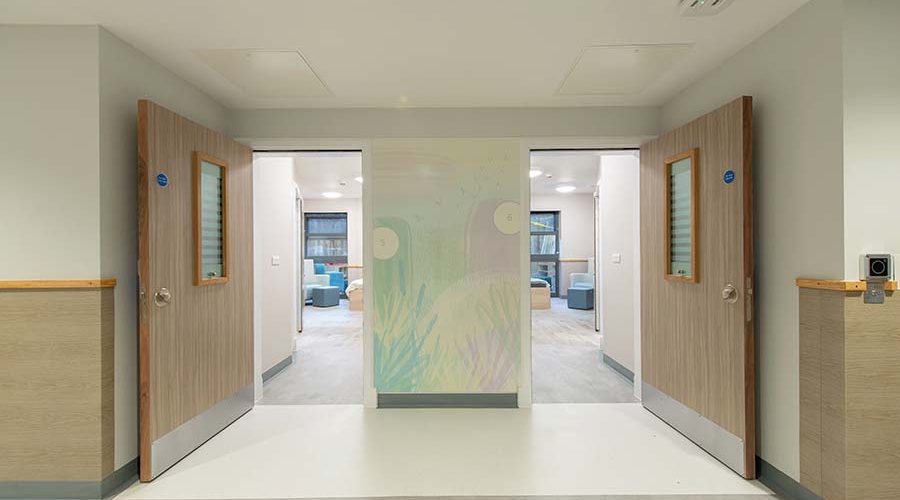The report into the cause of the fire at The Cube student accommodation building in Bolton, and how it spread, will help to shed light on how compatible modern approaches to construction and refurbishment are with the delivery of effective fire protection, says Ian Cowley, Regional Director (UK and Scandinavia) at Promat UK.
Promat Industry
The lessons from every fire incident enable architects, clients and fire safety professionals to look for opportunities to adapt future building designs to eliminate risk. However, many projects will have a complex supply chain where multiple different suppliers and installers are contributing to a building’s delivery. This introduces risks with weak points in the supply chain having the potential to compromise design objectives which intend to provide adequate fire protection.
Passive fire protection, through the integration of materials and systems that will resist fire and heat for a specified period in the event of a fire, is the foundation for a safe building. Separating key elements, such as fire doors and fire-resistant glazing, provides that crucial timeframe to allow for safe egress and the opportunity to minimise damage and preserve assets should a fire break out.
Whilst the focus of attention following the fire at The Cube – as with Grenfell Tower – will be on the materials used within building’s exterior cladding, it would be naïve to think that shortcomings can only exist in the area of the exterior envelope. In the 40+ years since Promat UK has been manufacturing fire-resistant products for the building sector, including core materials and intumescent seals for fire doors, fire-rated glass and complete glazing systems, we have seen countless incidences of products being wrongly specified, substituted for inferior alternatives or for products that haven’t been fire tested as part of the complete assembly in question, as well as poor installation. These errors are not made deliberately, but there appears to be a misunderstanding of how fire can behave.
That’s why we have been so proactive in the past three years in promoting the message of ‘Specified for a Reason’, which Promat UK has now registered as a trademark. This ensures that we can play our part in the creation of safe buildings by supporting clients in the specification and installation of fire doors and interior glazing.
When it comes to fire doors and fire-resistant glazing, evaluating the suitability of any product needs to take into account its evidence of testing and approvals in the chosen design styles. Can the fire performance claims be substantiated for the type of specific application being specified?
Testing times
There are five testing and approval methods which can indicate a passive fire protection product’s suitability for an application:
Primary test report
Product performance is demonstrated through a specific test report from a UKAS-accredited or notified European test laboratory. Raw data is published from a physical test in which a product or complete assembly is built and burned, conducted privately or via a third-party-accredited test facility.
Assessment report
Used in lieu of a test report to criteria determined by the PFPF (Passive Fire Protection Forum), these are based on the overriding premise that the assessed performance would be achieved if the construction were tested. Assessments can only be made by appropriately qualified persons and are useful for a range of variants to systems when testing would simply be impractical and uneconomical.
Field of application report
Appropriate when an extension to a product is deemed to be slight and, therefore, representative of expected performance for very specific applications, and with strict scope and conditions attached. The manufacturer will be clear about the range of situations in which their product can be sold.
Classification report
Written by an accredited body to provide a summary of the data from a test, including information on products and performance. Certain data may be redacted for IP reasons, but a classification report is accepted as proof of performance.
Third-party accreditation
Third-party accreditation offers independent monitoring along the supply chain to ensure standards are being upheld at every stage. These schemes have a requirement for systems and products to be included which go over and above the fire test, with membership dependent on product sampling when testing, FPC audits and production controls, as well as a product recall procedure; should this be required. In addition, the installer should also hold some training certification which may be system-specific, or industry recognised such as FIRAS.
All these methods originate with a test conducted to BS 476 or BS EN 1364 parts 1-4, and BS EN 1634-1:2008 specifically for doors. However, important differences exist between the five main routes used to provide evidence of compliance, so an understanding is needed for a confident, informed judgement to be made about the specification.
Track and trace
All of the above report approaches form the compliance governance of what can be used together, enabling a decision to be made about a product or system. But can we be certain that the products specified will ultimately be the ones that are installed?
This is why traceability of components is the next vital consideration in passive fire protection. It ensures the pedigree of a product can be trusted that it is correctly sourced and not substituted, as all items are known from source. This also makes them easier to replace or recall if a problem arises.
The transparency and clarity that traceability affords in the supply chain fosters loyalty, trust and confidence amongst customers and end-users, as well as allowing for easy benchmarking if alternatives are being considered.
Ultimately, understanding how the various testing, assessment and accreditation methods work, which all have an important place in the passive fire protection supply chain, and specifying traceable products, will provide a clear picture on the capabilities and expectations from an installation.








